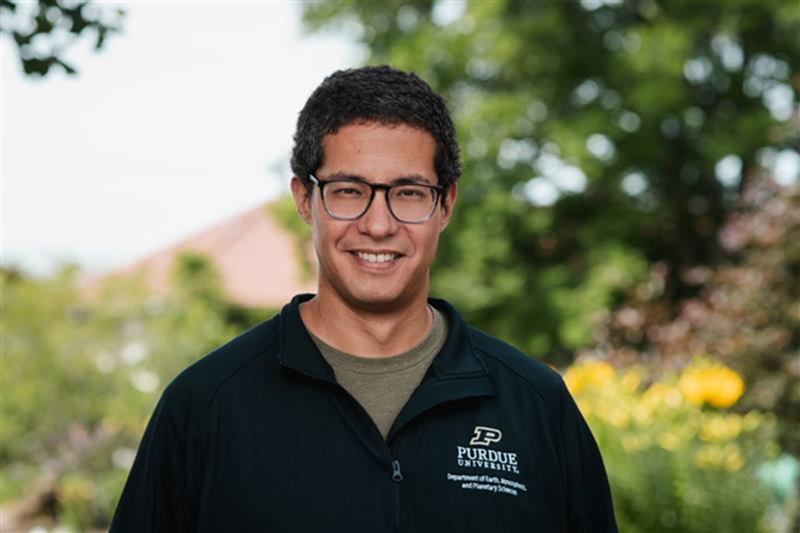
Dan Chavas is an expert at extreme weather: both the climate science that creates the conditions and the physics of the weather itself, including hurricanes, severe thunderstorms and tornadoes. (Purdue University photo/Greta Bell)
WEST LAFAYETTE, Ind. — Across the Midwest during the warmer months, studying the sky for signs of storms and tornadoes becomes one of the most popular pastimes.
Dan Chavas, an associate professor in the Department of Earth, Atmospheric, and Planetary Sciences at Purdue University's College of Science, takes it further: All day every day, he studies what makes tornadoes tick. Working at the intersection of climate science and meteorology, he looks at the big picture of what causes severe storms and tornadoes — and what dictates where they occur.
"I study both the climate and extreme weather," Chavas says. "My research asks, 'Why do we have severe thunderstorms or tornadoes at all?' There are specific regions on Earth that have more storms, more tornadoes than other places. What creates these stormy regions?"
The central and eastern regions of the United States are among the top spots for severe thunderstorms and form the hot spot for the Earth's most damaging and frequent tornadoes. Chavas uses real-world computer models to conduct experiments to determine what contributes to the formation of these storms.
"We have had these decades-old assumptions about what causes storms," he says. "We're validating those hypotheses and figuring out what makes North America such a hot spot."






